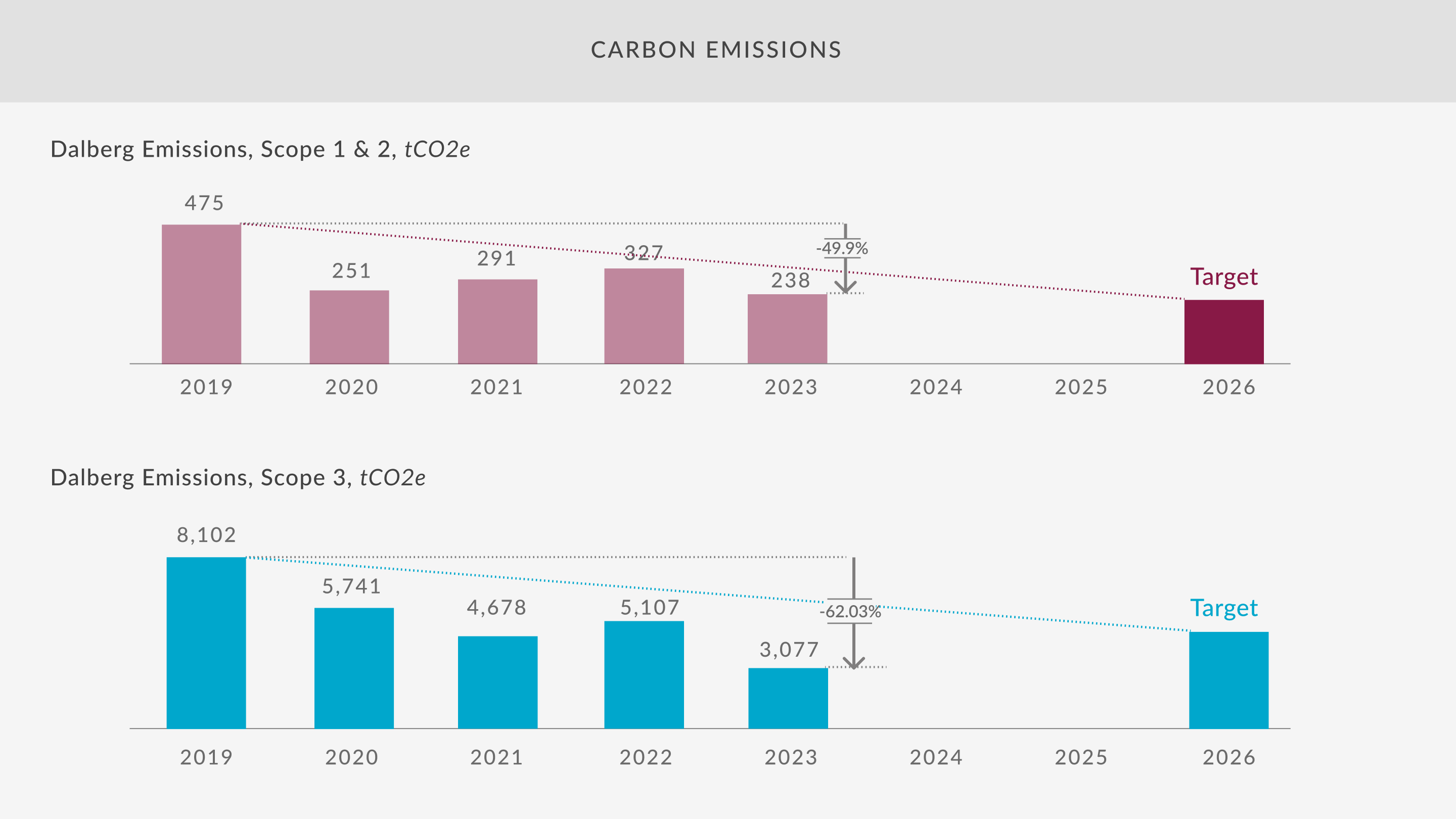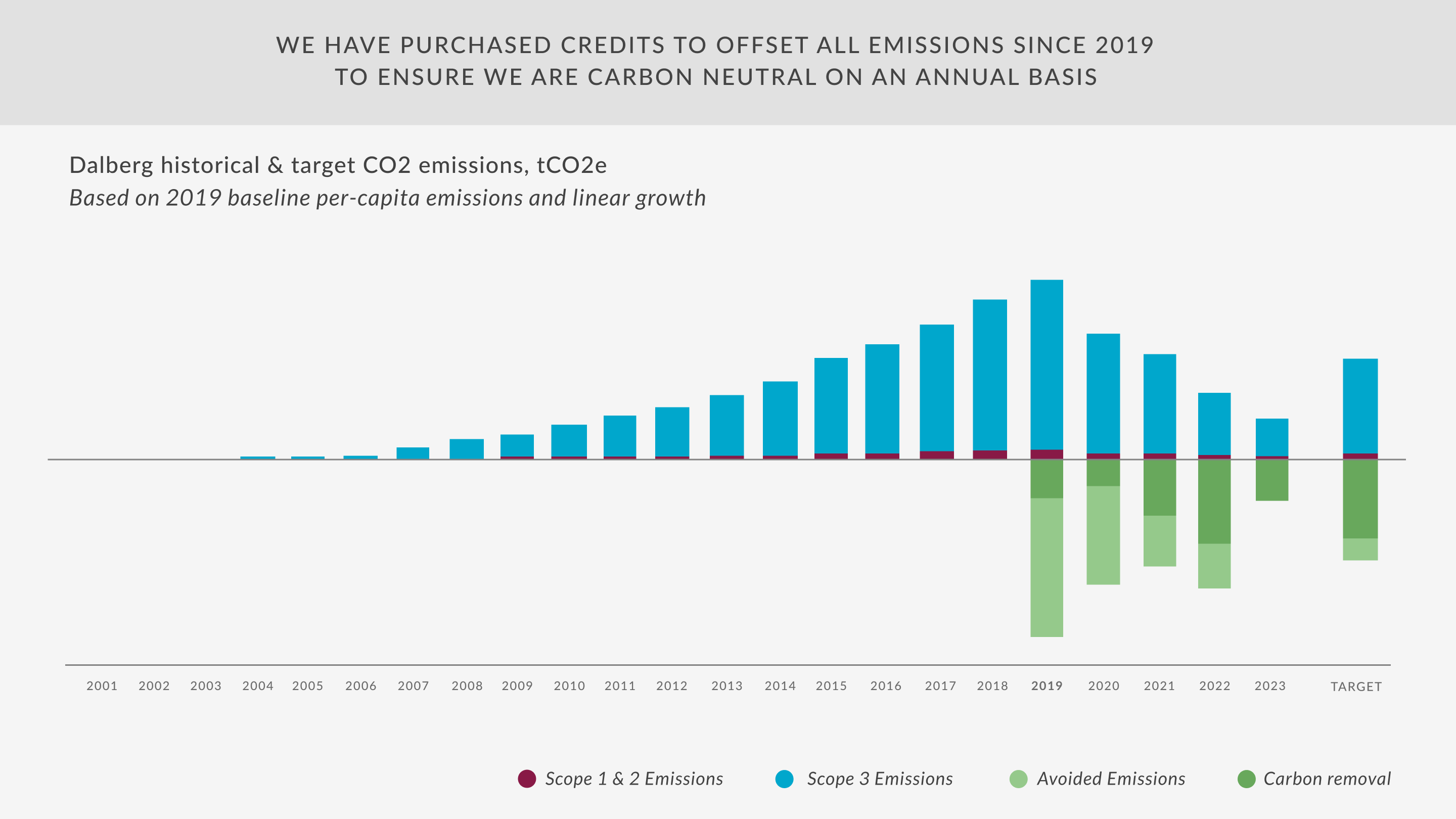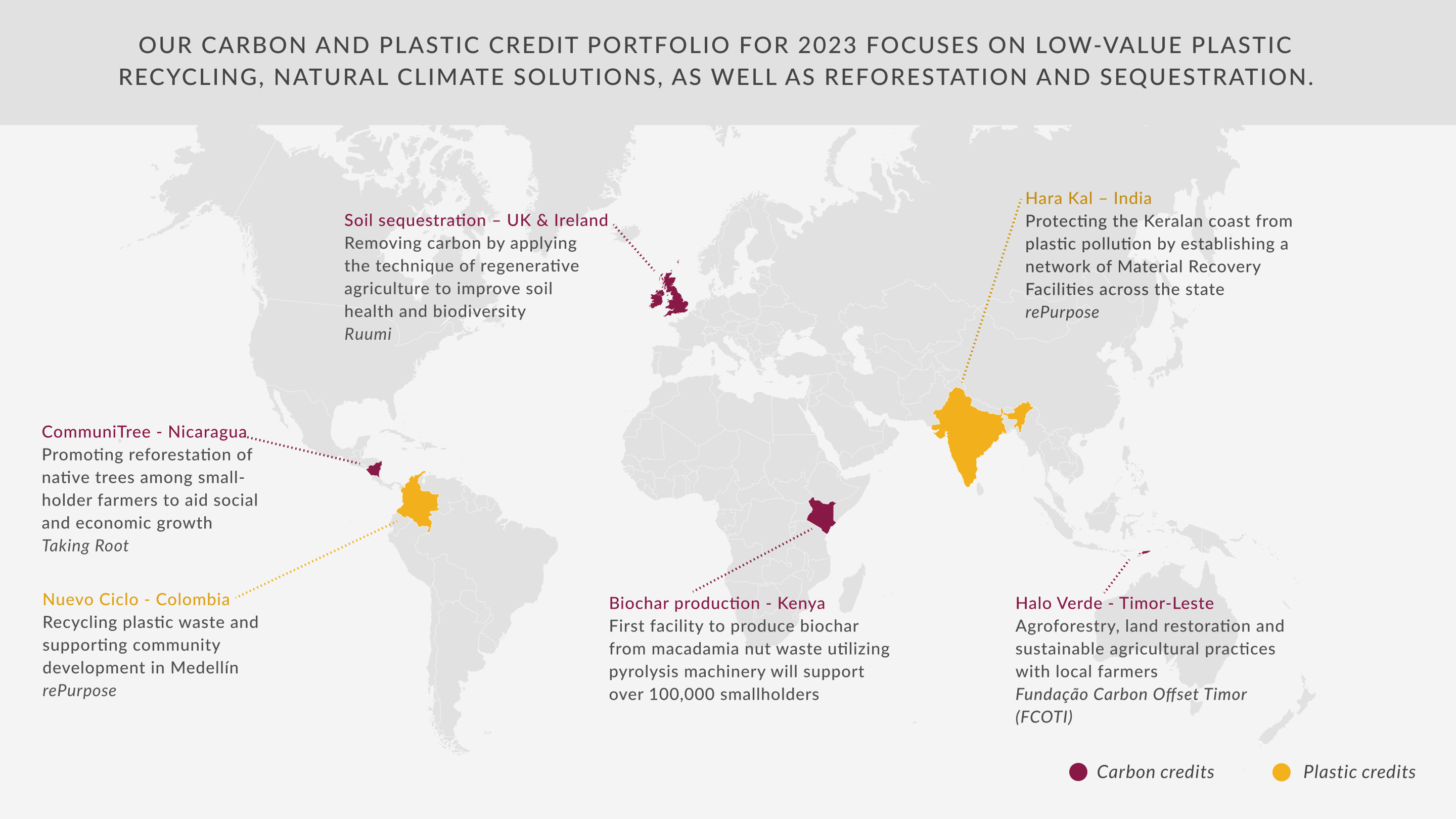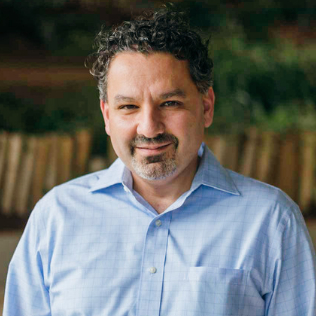Dalberg uses cookies and related technologies to improve the way the site functions. A cookie is a text file that is stored on your device. We use these text files for functionality such as to analyze our traffic or to personalize content. You can easily control how we use cookies on your device by adjusting the settings below, and you may also change those settings at any time by visiting our privacy policy page.
In 2020, Dalberg committed to being a carbon- and plastic-neutral company, aiming to achieve net zero emissions by 2025. Our three-part climate commitment binds us to reduce emissions wherever possible, allocate resources to offset unavoidable emissions—such as those from travel, commuting, and plastic disposal—and apply a climate lens to all our projects. This comprehensive approach includes accounting for and mitigating both our carbon emissions and plastic waste.
Each year, we share our progress. Here’s where we landed at the end of 2023 and an exciting new development from the first half of 2024.
Working towards our carbon reduction targets for 2025
We continue to work towards our targets for 2025, which include a 55% reduction in absolute scope 1 and 2 greenhouse gas (GHG) emissions¹ and a decrease in scope 3 GHG emissions by 55%, alongside a 30% reduction in per-person plastic footprint. In the last reporting cycle, Dalberg has cut its carbon and plastic emissions compared with our 2019 reference year by over 50% (50% reduction in scope 1 and 2, and above 60% in scope 3)².
New strategic alliance with Klimate as our carbon offset partner
Even as we work hard to reduce our emissions directly, Dalberg is buying carbon credits to compensate unavoidable emissions. We are collaborating with Klimate to build a carbon removal portfolio minimizing climate impact and maximizing environmental and social co-benefits through credible projects.
Compensating for unavoidable emissions
This year, Dalberg has:
- Purchased carbon credits to compensate for the 3316 tCO2e emitted across our offices2 and staff members (238 tCO2e under Scope 2, and 3077 tCO2e under Scope 3 across goods and services purchased, fuel and energy-related activities, business travels, and employee commuting).
- Purchased plastic credits to compensate for the plastic consumption (7,109 kg) across all Dalberg offices³.


Our carbon and plastic credits provide essential funding for impactful projects centered on recycling of low-value plastic (where the costs of collecting and processing plastic waste are higher than the revenue generated from sale of the recovered plastic) as well as reforestation and sequestration. Our 2023 projects are on the map below.

As we continue on our carbon reduction trajectory, our core objectives include maintaining the 55% decrease in GHG emissions, striving for a 30% reduction in per-person plastic footprint, and continuing to advise our clients to mitigate and adapt to climate change. We will continue to update our footprint methodology and measurements, support our teams to reduce their emissions, and select the highest quality credits to ensure we reach net-zero.
To know more about Dalberg’s three-part climate commitment, contact:
-
1
Dalberg uses the GHG Protocol framework along with UK DEFRA – Conversion Factors 2022 to calculate emissions. The GHG protocol is the global standard framework for measuring and managing emissions. Scope 1: Direct emissions from owned or controlled sources (e.g., gas, heating). Scope 2: Indirect emissions from the generation of purchased energy (e.g., electricity). Scope 3: Other indirect emissions across the value chain of the reporting company, including upstream-downstream emissions (e.g., flights, commutes, materials, water, waste)
-
2
Our carbon and plastic accounting processes have continually evolved over the years, guided by the insights and recommendations of our partners and carried out by a dynamic pool of office climate champions. Consequently, year-on-year comparisons may reflect approximations rather than precise measurements.
-
3
Our carbon and plastic accounting processes capture the carbon and plastic footprints originating from offices presently under the Dalberg Group affiliation.


